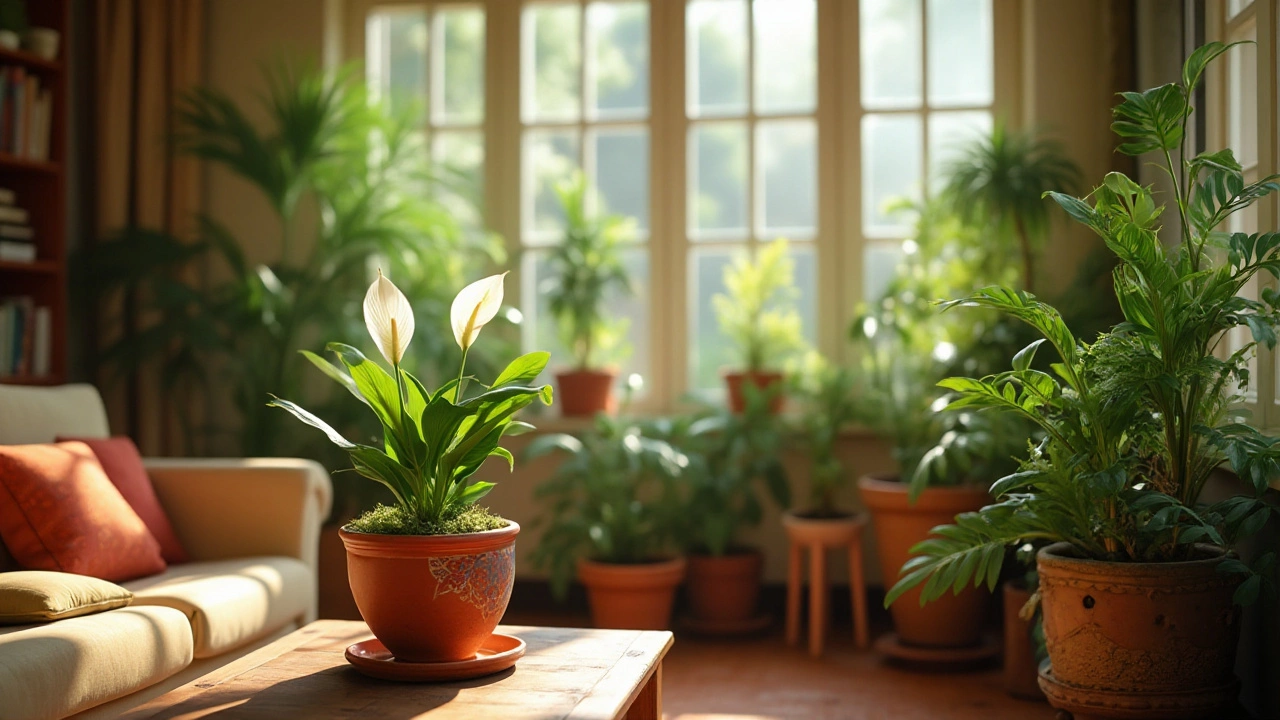Clean Air Benefits of Gardening: Freshen Your Home and Outdoors
Ever notice how a garden feels brighter on a breezy day? That’s not just a vibe – plants actually clean the air. They take in carbon dioxide, release oxygen, and trap dust and pollutants on their leaves. Whether you have a balcony, a backyard, or just a few houseplants, the right greens can make the air around you healthier.
Indoor Plants That Act Like Natural Air Filters
Houseplants such as spider plant, snake plant, and peace lily are famous for pulling toxins out of indoor air. They absorb formaldehyde, benzene, and xylene – chemicals that come from furniture, paints, and cleaning products. A simple rule is to place one plant per 100 square ft for noticeable improvement. Keep the soil moist but not soggy, and give them bright, indirect light for the best air‑purifying power.
Garden Practices That Keep Outdoor Air Fresh
Outside, choosing native trees and fast‑growing flowering species adds leaf surface that captures dust and soot. Using drip irrigation, like a buried drip line, reduces water waste and prevents runoff that can stir up soil particles. Composting kitchen scraps creates nutrient‑rich soil, which encourages healthy root growth and stronger plants that trap more pollutants.
Vertical gardens on walls or balconies multiply leaf area in tight spaces. By mounting modular trays, you can grow herbs, ferns, or succulents that act as mini air cleaners while adding green décor. Remember to rotate plants every few weeks so each gets equal light and continues to thrive.
When you water plants, let tap water sit for a few hours. This lets chlorine evaporate, protecting delicate foliage that does most of the air‑cleaning work. If you have hard water, a quick filter can prevent mineral buildup that blocks leaf pores.
Pairing plants that dislike coffee grounds (like tomatoes or roses) with those that love them (like mushrooms) creates a balanced garden. This “sister plant” strategy reduces the need for chemical fertilizers, which can seep into the air as volatile compounds.
Finally, keep your garden waste tidy. Removing dead leaves and pruning regularly stops mold growth, which can release spores into the air. A neat garden not only looks good but also contributes to a healthier breathing environment for you and your family.
So, whether you’re tending a balcony herb garden or a spacious backyard, each green leaf is working to clean the air around you. Start small, pick a few easy‑care plants, and watch the air get fresher day by day.
Do Plants Really Purify the Air? The Truth About Houseplants and Indoor Air Quality
Lots of people believe that houseplants make indoor air much cleaner, but is that actually true or just a myth? This article breaks down what science really says about houseplants and air purification. You'll find out which plants claim to clean the air, what actually works, and how to get the most out of your indoor green buddies. Get ready for some surprises and tips to help your plants thrive. If you want healthier indoor air, this is your must-read guide.
Top Air-Purifying Houseplants for a Healthier Home
Houseplants not only enhance the beauty of indoor spaces but also play a significant role in improving air quality. This article explores some of the best houseplants known for their ability to purify air and remove toxins. Learn about popular plants like the peace lily, snake plant, and spider plant, and how they contribute to healthier indoor environments. Discover tips on how to care for these plants to maximize their air-cleaning properties.
About
Indoor Plant Care
Latest Posts

Lotus Flower: Why It's the Most Iconic Flower of India
By Alden Thorne Jul 10, 2025

Exploring the Alternative Name for Drip Irrigation
By Alden Thorne Feb 10, 2025

Discover Seasonal Blooms: India's Month-Specific Flowers
By Alden Thorne Jan 14, 2025


